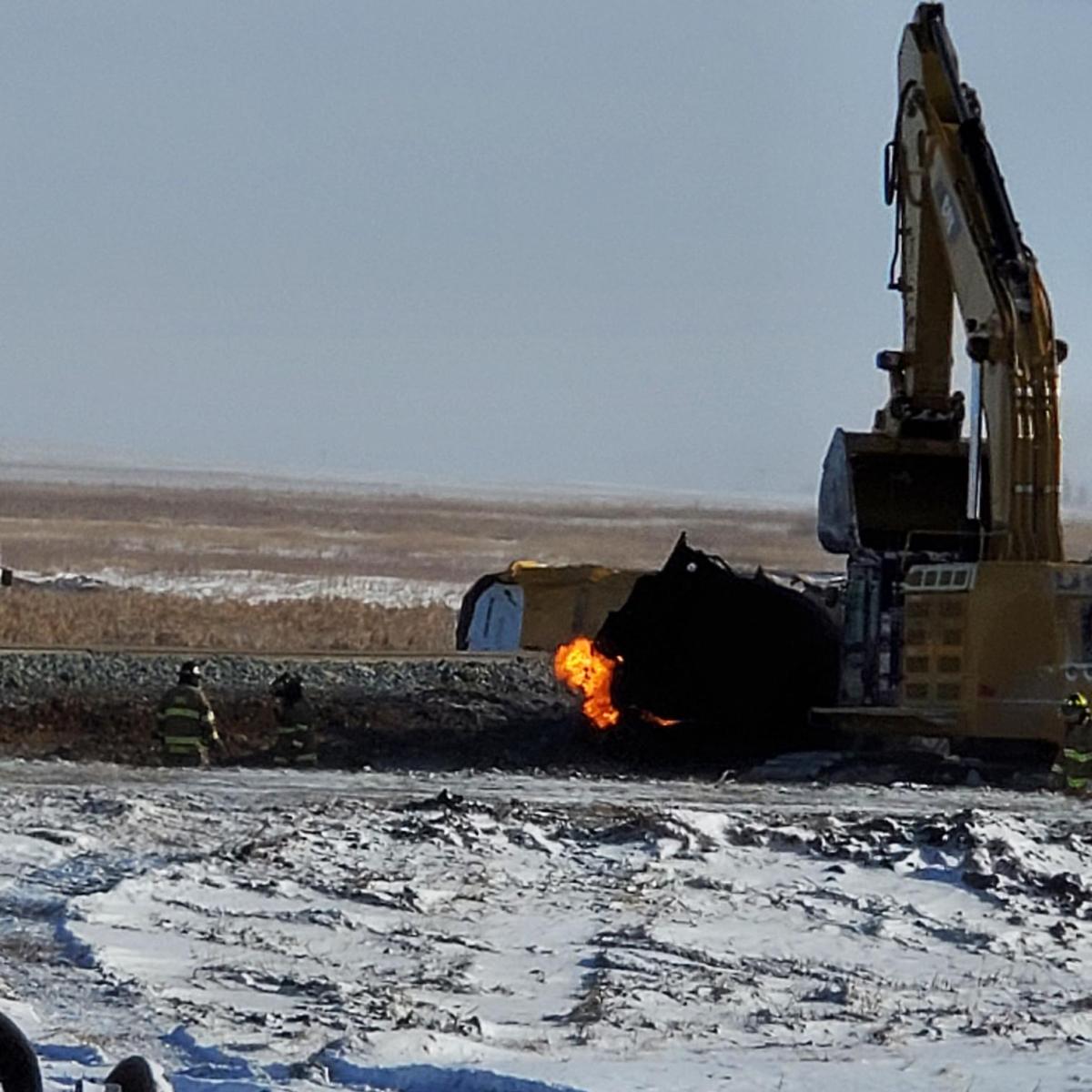Main-track derailment
Canadian Pacific Railway
Mile 119.22, Weyburn Subdivision
Macoun, Saskatchewan
The occurrence
On 01 December 2022, a Canadian Pacific Railway (CP) freight train was proceeding northward on the CP Weyburn Subdivision when 38 freight cars derailed in two separate derailments near Mile 119.22.
The primary derailment area comprised a total of 15 derailed freight cars including the two tank cars containing dangerous goods. During the derailment one car was breached and caught fire. The fire subsequently ignited a covered hopper car loaded with plastic pellets; the plastic ignited as it melted and further fuelled the fire.
A secondary derailment approximately 250 m south of the primary derailment resulted in 23 cars derailing.
There were no injuries to the crew or the public as a result of this occurrence. A total of 37 people were evacuated from the surrounding area, and provincial highway 39 was closed.
The TSB is investigating.
Media materials
Deployment notice
TSB is deploying a team of investigators to the site of a derailment near Macoun, Saskatchewan
Winnipeg, Manitoba, 01 December 2022 — The Transportation Safety Board of Canada (TSB) is deploying a team of investigators following the derailment of a Canadian Pacific freight train that occurred earlier today near Macoun, Saskatchewan. The TSB will gather information and assess the occurrence.
Investigation information
R22S0165
Main-track derailment
Canadian Pacific Railway
Mile 119.22, Weyburn Subdivision
Macoun, Saskatchewan
Download high-resolution photos from the TSB Flickr page.
Class of investigation
This is a class 3 investigation. These investigations analyze a small number of safety issues, and may result in recommendations. Class 3 investigations are generally completed within 450 days. For more information, see the Policy on Occurrence Classification.
TSB investigation process
There are 3 phases to a TSB investigation
- Field phase: a team of investigators examines the occurrence site and wreckage, interviews witnesses and collects pertinent information.
- Examination and analysis phase: the TSB reviews pertinent records, tests components of the wreckage in the lab, determines the sequence of events and identifies safety deficiencies. When safety deficiencies are suspected or confirmed, the TSB advises the appropriate authority without waiting until publication of the final report.
- Report phase: a confidential draft report is approved by the Board and sent to persons and corporations who are directly concerned by the report. They then have the opportunity to dispute or correct information they believe to be incorrect. The Board considers all representations before approving the final report, which is subsequently released to the public.
For more information, see our Investigation process page.
The TSB is an independent agency that investigates air, marine, pipeline, and rail transportation occurrences. Its sole aim is the advancement of transportation safety. It is not the function of the Board to assign fault or determine civil or criminal liability.

